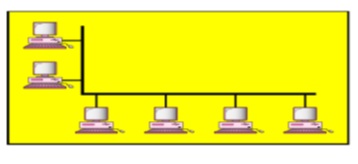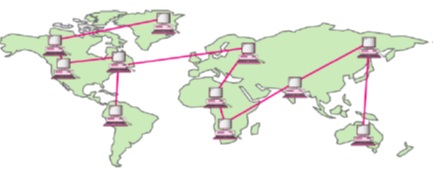Types of Networks
Network category is determined by its size, ownership, the distance it cover and its physical architecture. The types of networks are local-area networks and wide- area networks. The category into which a network falls is determined by its size. A LAN normally covers an area less than 2 miles, a WAN can be worldwide. Networks of a size in between are normally referred to as metropolitan area networks and span tens of miles.
Local Area Network:
A Local Area Network (LAN) is usually privately owned and links the devices in a single office, building, or campus (see Figure 1.10). Depending on the needs of an organization and the type of technology used, a LAN can be as simple as two PCs and a printer in someone's home office; or it can extend throughout a company and include audio and video peripherals. Currently, LAN size is limited to a few kilometers.

You May Also Like:
Data Communications and Its Characteristics
Characteristics of Networks
Protocols and Standards
Components of Data Communication
LANs are designed to allow resources to be shared between personal computers or workstations. The resources to be shared can include hardware (e.g., a printer), software (e.g., an application program), or data.
Wide Area Network:
A Wide Area Network (WAN) provides long-distance transmission of data, image, audio, and video information over large geographic areas that may comprise a country, a continent, or even the whole world. A WAN can be as complex as the backbones that connect the Internet or as simple as a dial-up line that connects a home computer to the Internet.

Metropolitan Area Network:
A Metropolitan Area Network (MAN) is a network with a size between a LAN and a WAN. It normally covers the area inside a town or a city. It is designed for customers who need a high-speed connectivity, normally to the Internet, and have endpoints spread over a city or part of city. A good example of a MAN is the part of the telephone company network that can provide a high-speed DSL line to the customer.

You May Also Like:
Different Data Flow Directions
Different Types of Connections
Types of Topologies
Back to DCN Questions and Answers

